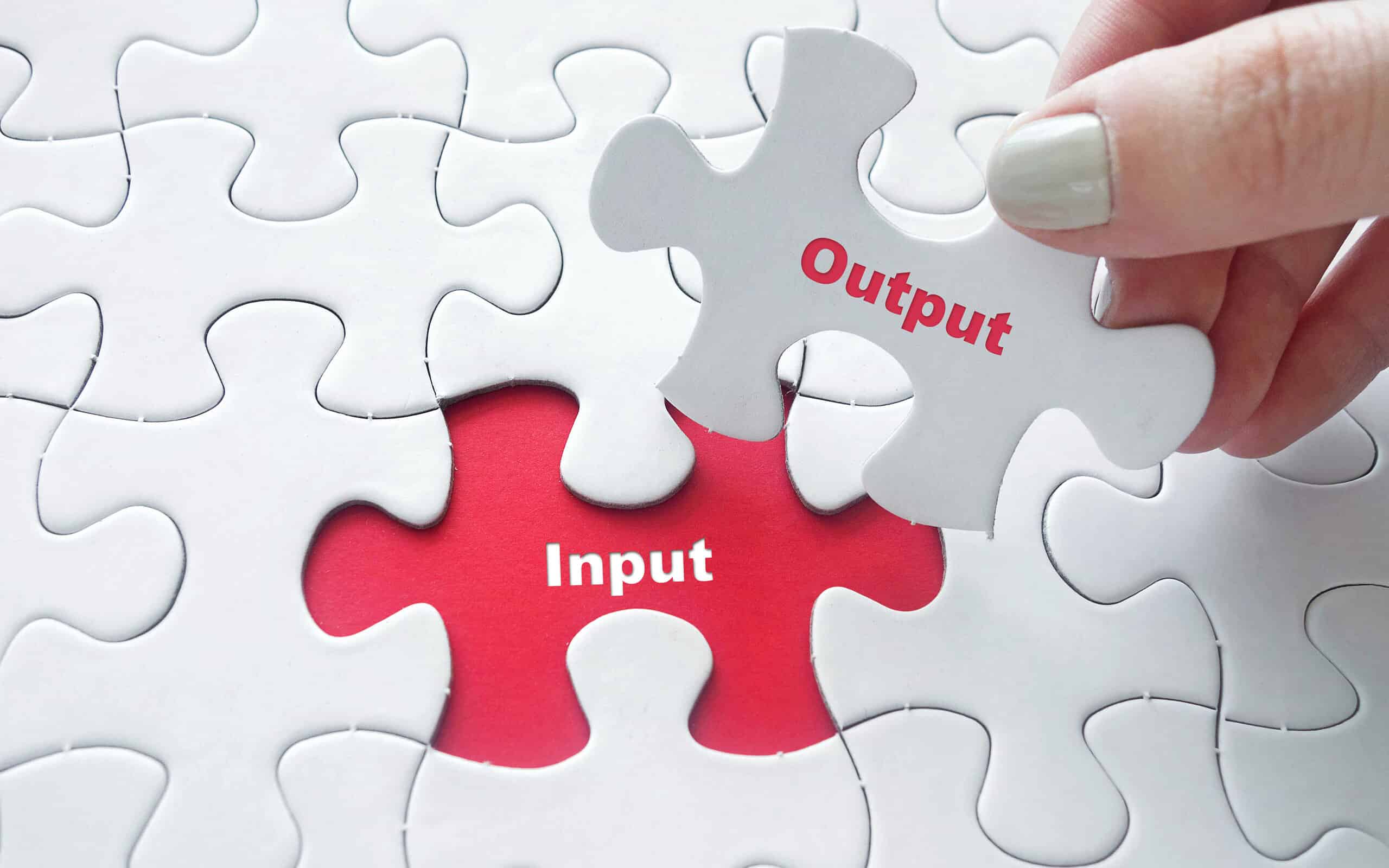
When you work on a process, there is always a result. These results can be broken down into outputs and outcomes.
Whatever you put into your work results in the degree of your output. Your output is dependent on the strength of your input, so it is vitally important to choose the right inputs that lead to the desired amount of output and its level of quality.
Overview: What is output?
Output can be defined as the amount of something that is produced. The means of production can be a machine, a person, an industry, or a combination of these.
3 benefits of output
Here are some clear benefits of output:
1. Measurement
Measuring the degree of output is likely a good indicator of how likely one will be to reach a desired outcome.
2. Summarizes an activity
The output acts as a quantitative summary of a given activity.
3. Health of a process
Looking at the amount of output can show how healthy and efficient a process is. Higher output generally points to a more efficient process, while low output signifies the opposite.
Why is output important to understand?
Output is important to understand for the following reasons:
Customer expectations
Having an understanding of your organization’s output tells you how capable your business is of reaching customer expectations given the current process.
Need for change
By having an understanding of output, you can know if changes in your current process might be necessary if the output levels are too low.
The results of the change in inputs
The understanding of output allows you to know how dependent it is upon changes in the input.
An industry example of output
A food manufacturer has been given a contract to make a new Girl Scout cookie. The launch of the new cookie is in a few months, and the manufacturer is confident that the output level of its factories can meet the target quantity that is specified in the contract. To the surprise of the Girl Scout board of directors, pre-orders for the new cookie turn out to be well beyond expectations. It becomes clear that the number of pre-orders exceeds the amount of output specified in the original contract with the manufacturer. The board of directors decides to offer the manufacturer a new contract that increases the quantity of the new cookie exponentially in advance of the official launch date. The manufacturer looks at the maximum amount of output that it can possibly reach and has to forfeit the contract, realizing that meeting the target quantity would be impossible, given the current resources available.
3 best practices when thinking about output
Here are some practices to keep in mind when it comes to thinking about output:
1. It is not a substitute for outcomes
When thinking about output, it is important to recognize that it is not synonymous with the outcome. Output is the result of an activity that is carried out by an organization, while the outcome is the added value that is derived from the output. The outcome is what is desired by the business, whereas the output is the action taken toward achieving the outcome. The outcome is the difference made from the output.
2. The outcome can be more important than the output
Outputs are important because they enable the funding of the outcome. Outputs are the what, while outcomes are the why. There is no need for outputs without a compelling outcome. Be sure to always have a clear understanding of the why and not just the what.
3. Targets
Keep an eye on the targets of your organization. These are specific and different from outputs and outcomes. Targets are specific, they are the goalposts for your outputs. You can have a high output without reaching your target. You can also have a low output and still reach the target.
Frequently Asked Questions (FAQ) about output
How do you define your output?
Output is the quantity of something completed in a given time period. For an organization that is producing a single good, you can simply look at the number of units of the good produced in a specific amount of time, such as a year, as a measure of your business’s output.
Is output transferable?
Output can be used directly or sold to other organizations for the purpose of creating more output. An example would be the manufacturing of an engine to then be used in the production of an automobile.
What is an output device?
An output device is a piece of equipment or hardware that serves to give the result of input that is entered into it. One example would be a printer.
Choose the right input for desirable output
Your output is directly influenced by your input. If there are specific needs to be met in your output, it is vitally important to choose the right inputs. Everything that goes into your process can be part of your input, so you need to be in control of your process in order to have the desired output. High output of significant quality is an indicator that your process is healthy and efficient. If you are not reaching the appropriate level of output, it is time to look at your inputs and processes to see where changes need to be made. A key methodology to adopt in this type of situation is input-process-output. By having your inputs and processes under control, the desired outputs and outcomes can be achieved.